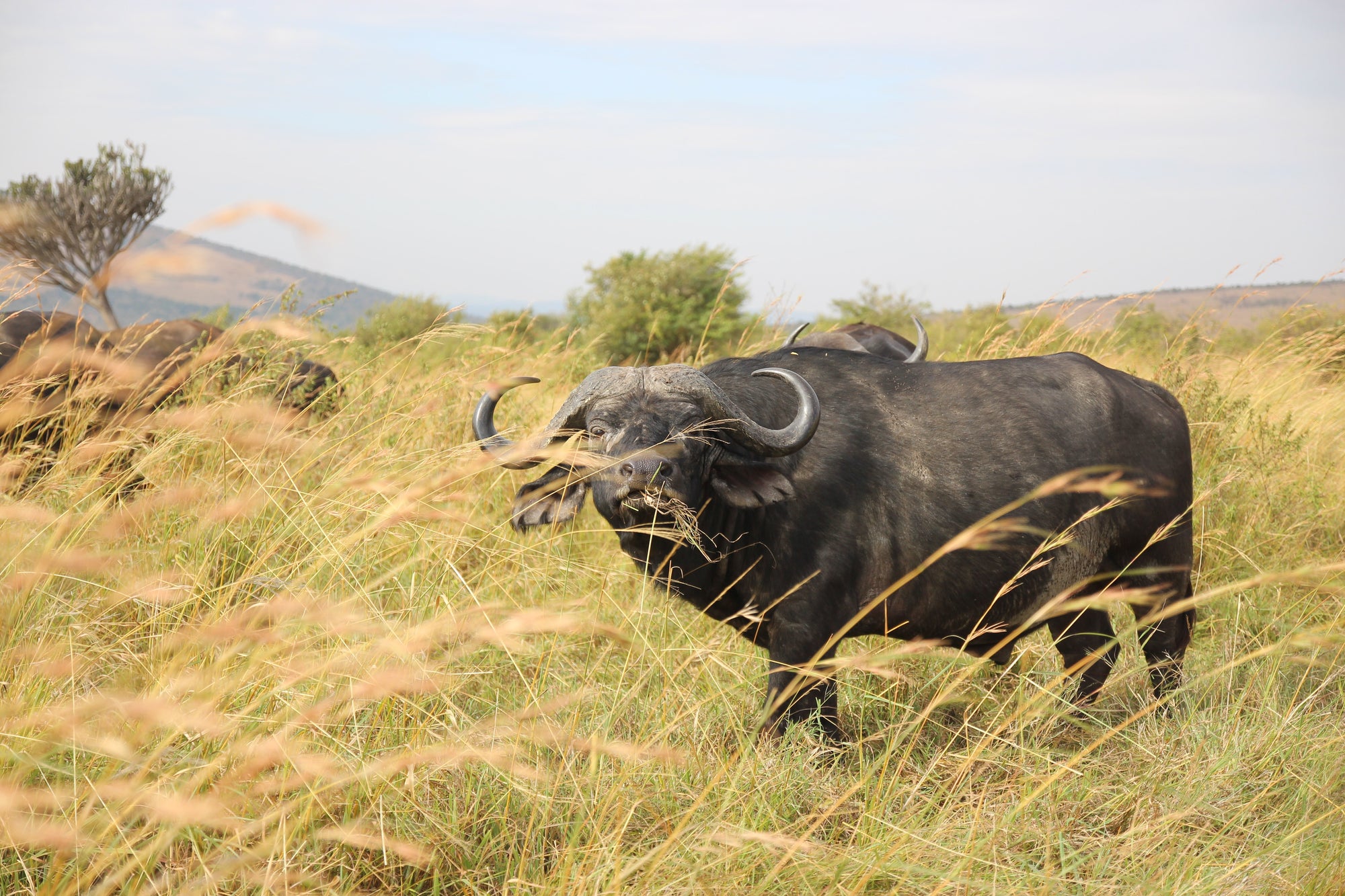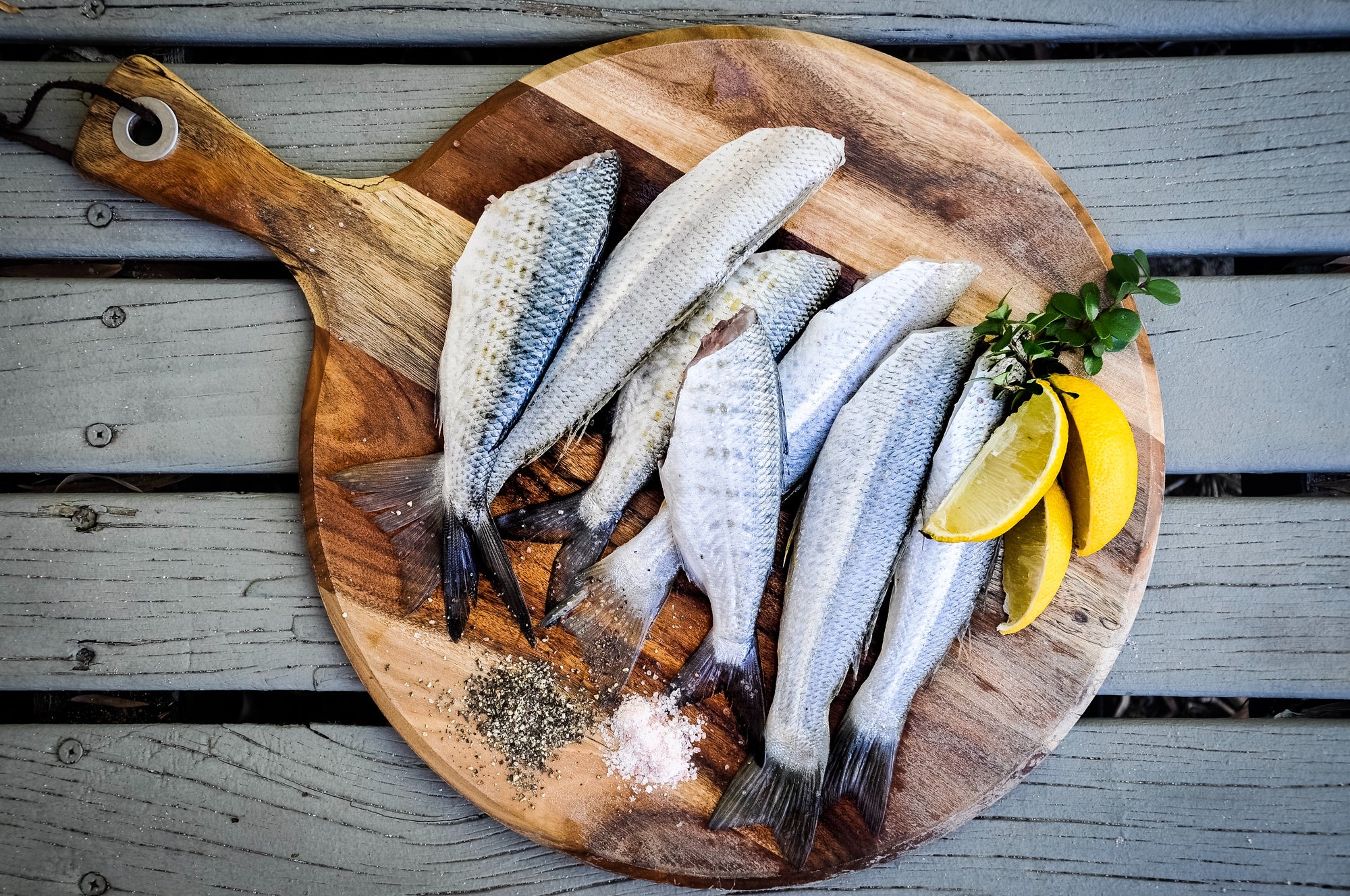The quest for the perfect piece of jerky involves a multitude of steps. From the very beginning where you choose the best cut for beef jerky to actually cutting meat for jerky - each step influences the final product.
And today, we’re going to place a spotlight on how to cut meat for jerky to perfection. After all, there is a delicate line separating too thick from too thin - and the sweet spot in the middle is where you’ll enjoy peak flavor, texture, and chewiness.
We bring a century of experience to the table as Mahogany Smoked Meats first opened our doors in 1922. You can rest assured you’ve found a trustworthy guide for how to slice meat for jerky.
Questions of how thick or thin, with or against the grain, and next steps will all be answered below. You’ll leave here with complete clarity on the best way to cut meat for jerky. And if you want something to snack on while you work, look no further than our premium jerky online.
How Cutting Meat for Jerky Influences the Final Product
Before we talk about how to cut meat for jerky, why is this such an important consideration?
The delectable journey of crafting the ideal piece of jerky might begin with selecting the finest ingredients or choosing the best dehydration technique.
Still, the bedrock of it all, the foundation that determines everything from flavor to texture, lies in the cut.
The Role of Cut Size in Dehydration and Flavor Absorption
Much like a sponge, the meat's surface and thickness play a pivotal role in how it absorbs marinating juices, spices, and flavors.
A thicker slice might revel in a slow, deep marinade infusion, creating a hearty, robust bite for those who enjoy a more chewy experience.
On the flip side, thin slices quickly embrace every ounce of flavor, resulting in an intense burst of taste with every bite. Moreover, thin slices have the perk of faster dehydration, ideal for those eager to get their jerky fix.
But the thickness isn't just about marinating efficiency or speed. It’s also about texture. Thick cuts tend to be chewier and might be savored over a more extended period, prolonging the jerky experience. Meanwhile, thinner cuts often offer a quicker chew, getting to that delightful meaty essence more rapidly.
Impact on Cooking Time and Consistency
When you place your meat in the dehydrator or smoker, its thickness directly dictates the time it will take to reach that perfect jerky consistency. This is something we discuss in greater detail in our guide on how long to dehydrate beef jerky.
Thicker slices are marathon runners, requiring patience and a keen eye to ensure they don't over-dehydrate. But the rewards? A jerky piece that’s moist in the middle yet dry on the outer edges - a balance some jerky enthusiasts swear by.
In essence, the manner in which you cut your jerky meat plays a role in the final taste & texture along with how long the process takes.
So, whether you’re looking to perfect your elk jerky recipe, buffalo jerky recipe, or you want to make the best beef jerky in the world, we’ll help you set out on the right foot below with tips on the best way to cut meat for jerky.
How to Cut Meat for Jerky: Step-by-Step Guide to the Best Way to Cut Meat for Jerky
Ready to learn how to cut meat for jerky? While you may feel stressed and uncertain right now, we’re going to help you feel confident and clear on your next steps over the coming paragraphs. First things first - let’s talk about which cuts you should actually use.
First, What Cuts of Meat Should You Use?
Choosing the right cut of meat is paramount to the final product - whether it’s beef or the best cuts of elk meat. While it's possible to make jerky from various cuts, certain options consistently outshine the rest:
- Top Round: Lean and large, this is a favorite among many jerky enthusiasts. It offers a smooth texture with minimal sinew, ensuring your jerky isn’t overly chewy.
- Eye of Round: A close contender to the top round, the eye is lean, tender, and conveniently shaped for cutting long jerky strips.
- Flank Steak: This cut is slightly pricier but boasts a richer flavor. Its grainy texture makes for a delightful chew.
Remember, lean cuts are key. Fat doesn’t dehydrate well and can cause your jerky to spoil faster. We’ll talk more about this in a moment but first, here are the tools and supplies you need to start cutting meat for jerky.
Necessary Tools & Supplies for Cutting Meat for Jerky
To get uniform, clean cuts, you need the right tools:
- Sharp Chef’s Knife: This is non-negotiable. A razor-sharp knife ensures safety and precision.
- Cutting Board: Opt for a large, sturdy board. Wood or hard plastic is preferable.
- Freezer or Chill Space: Partially freezing your meat can make it easier to handle and cut.
These are worth investing in if you don’t already have them. Just as with an artist’s paintbrush and canvas - you’re only as good as your tools!
Start by Trimming the Fat
Before making the main cuts, trim away any excess fat from the meat. While some fat can add flavor, too much leads to uneven drying and a shorter shelf-life for your jerky.
Moreover, excess fat can start to get in the way of the health benefits of jerky. Fatty beef jerky may result in weight gain as it’ll inevitably have more beef jerky calories. Stick with lean meat as you probably want high beef jerky protein content anyway.
That being said, use your sharp knife and work slowly, removing visible fat layers. Then comes the fun part - actually cutting meat for jerky.
How Thick to Cut Meat for Jerky: Thin vs Thick Slices
Figuring out how thick to cut meat for jerky, or in some cases, how thin to cut meat for jerky, is a fine line. As we briefly mentioned earlier, yhickness dictates not only the drying time but also the texture.
That being said, you can choose to go with thick or thin slices based on your preferences and schedule:
- Thin Slices (1/8" to 1/4"): These dry quickly and absorb marinade rapidly. Ideal for those who want a crispier, flavor-packed jerky.
- Thick Slices (1/4" to 1/2"): Take longer to dry but offer a chewier, meatier bite. They retain more of their natural meat flavor.
Your preference might vary, but remember consistency is crucial. Uneven slices mean uneven drying. Now, let’s talk about cutting with or against the grain.
Should You Cut With or Against the Grain of Meat?
The grain refers to the direction in which the muscle fibers run. Cutting with or against it impacts how your jerky feels when chewed:
- With the Grain: Results in a more rugged, chewier jerky. This cut is for those who love to savor their snack, taking their time with each bite.
- Against the Grain: Produces a more tender jerky that’s easier to bite through. If you're introducing someone to jerky, this might be the preferred method.
There's no right or wrong here. It boils down to personal preference. However, it's worth noting that at Mahogany Smoked Meats, we've honed our techniques over the years to find the perfect balance between grain, cut, and flavor. The result? A jerky that’s both tender and satisfyingly chewy.
More Tips on Cutting Meat for Jerky
Before we talk about the next steps, we want to offer a few more tips on slicing meat for jerky to ensure an amazing final product:
- Temperature Matters: Before cutting, chilling the meat in the freezer for about an hour makes it firmer and easier to slice consistently. This can be a game-changer, especially for those who struggle with achieving even thickness across slices.
- Safety Precautions: Always ensure your hands and the meat are dry. Wet hands or meat can make the knife slip, leading to potential accidents. Using cut-resistant gloves is also a good safety measure.
- Yield from the Meat: It's worth noting how much jerky you'll get from a given amount of fresh meat. Typically, due to water loss during dehydration, you'll end up with a yield of about 1/3. So, 3 pounds of fresh meat might give you about 1 pound of finished jerky.
- Hygiene: Cross-contamination is a big concern. Ensure you're working on a clean surface, and always wash your hands and tools thoroughly before and after handling raw meat.
Whether you’re making the classic beef jerky vs deer jerky or some other beef jerky alternative, these tips all apply. That being said, let’s talk next steps.
What Comes Next: Tenderizing, Marinating, Dehydrating, Smoking, and More
Now that you know how to cut meat for jerky, what comes next? Having mastered the delicate art of slicing meat for jerky, each step you take from here on out influences the taste, texture, and overall appeal of your jerky.
Marination Techniques: Infusing Every Slice with Delight
Marinating is where the magic happens. The key is to ensure every slice is well-coated and submerged in your marinade.
Zip-lock bags work wonders for this, as you can squeeze out the air and make sure the meat is soaked uniformly. Ideally, leave the meat to marinate for at least 6-24 hours.
Rotate or shake the bag occasionally to redistribute the marinade and ensure even flavor infusion.
Seasoning Strategies: Adding That Extra Zing
Beyond marination, your seasoning choices can elevate your jerky to the next level. While pre-made jerky seasoning mixes are available, don't be afraid to get creative!
Combine spices like smoked paprika, cayenne pepper, or even some brown sugar for a hint of sweetness. Just remember: a little goes a long way. Always taste-test your mix on a small portion of meat before committing to the whole batch.
Tenderizing Techniques for Melt-in-Your-Mouth Results
Tender meat is the dream of every jerky enthusiast. Before marinating, consider using a meat mallet to pound the meat lightly. Not only does this break down tough fibers, but it also allows your marinade to seep in more effectively.
For those looking to invest a bit more, meat tenderizing tools with small blades can be bought, ensuring even, consistent results.
Smoking vs. Dehydrating: Which Method to Choose?
The choice between smoking and dehydrating often comes down to preference and equipment availability. Dehydrating is more accessible for most home cooks, requiring only a simple dehydrator. It delivers a drier, more traditional jerky texture.
Smoking, on the other hand, imparts a distinct smoky flavor, while often preserving a bit more moisture in the meat. If you're new to the game, try both methods over time to find your personal favorite.
Remember, the beauty of homemade jerky lies in its customization; the power to tweak every batch until it's perfectly tailored to your tastes.
After it’s all said and done, you’ll want to read our tips on storing beef jerky. We have guides on topics like does beef jerky expire, how long does beef jerky last, and can you freeze beef jerky. These resources all share a common goal of helping you avoid eating expired beef jerky.
The Mahogany Edge: Why Our Jerky Stands Out as the Premier Choice Online
We know you’re here learning how to slice meat for jerky because you’re making your own batch. And good on you - this is a rewarding project that will tantalize your taste buds!
But, why not gain some inspiration from the best to do it? With more than 100 years of experience, you can count on us for premium smoked meats online.
We sell elk jerky, fish jerky, boar jerky, buffalo jerky, beef jerky, and an array of other meat treats you’ll love. No matter what types of jerky you crave you can count on us to satisfy.
Across all these varieties, we honor the traditions of jerky making in small batches to maintain consistent quality. And, our unique mahogany wood smoking process is going to win your heart - we’re the only smokehouse in the nation that uses this type of wood!
But, why not taste the difference yourself? Explore our catalog today and treat yourself to the tastiest, healthiest jerky online. Because at this point it’s time we wrapped up this guie on how to cut meat for jerky.
Parting Thoughts on How to Slice Meat for Jerky
There you have it - how to cut meat for jerky. In the intricate dance of crafting perfect jerky, each step - from the initial cut to the final dehydration - plays a pivotal role in flavor and texture.
As you've discovered, precision in slicing meat sets the stage for all subsequent processes. But while mastering the art of jerky-making can be a fulfilling endeavor, it requires patience and experimentation.
We hope this conversation on the best way to cut meat for jerky has left you feeling confident about your next steps. If you want to learn more about the delicious world of jerky, explore our blog.
You’ll find resources on topics like who invented beef jerky, is beef jerky good for you, what does beef jerky taste like, turkey jerky nutrition, beef jerky prices, and more. But at this point, it’s time to get started cutting meat for jerky.
If you're ever looking for a quick jerky fix or want to compare your homemade batch with expertly crafted pieces, remember that Mahogany Smoked Meats offers a tantalizing array of flavors. Shop with us and savor the taste of expertise in every bite!





